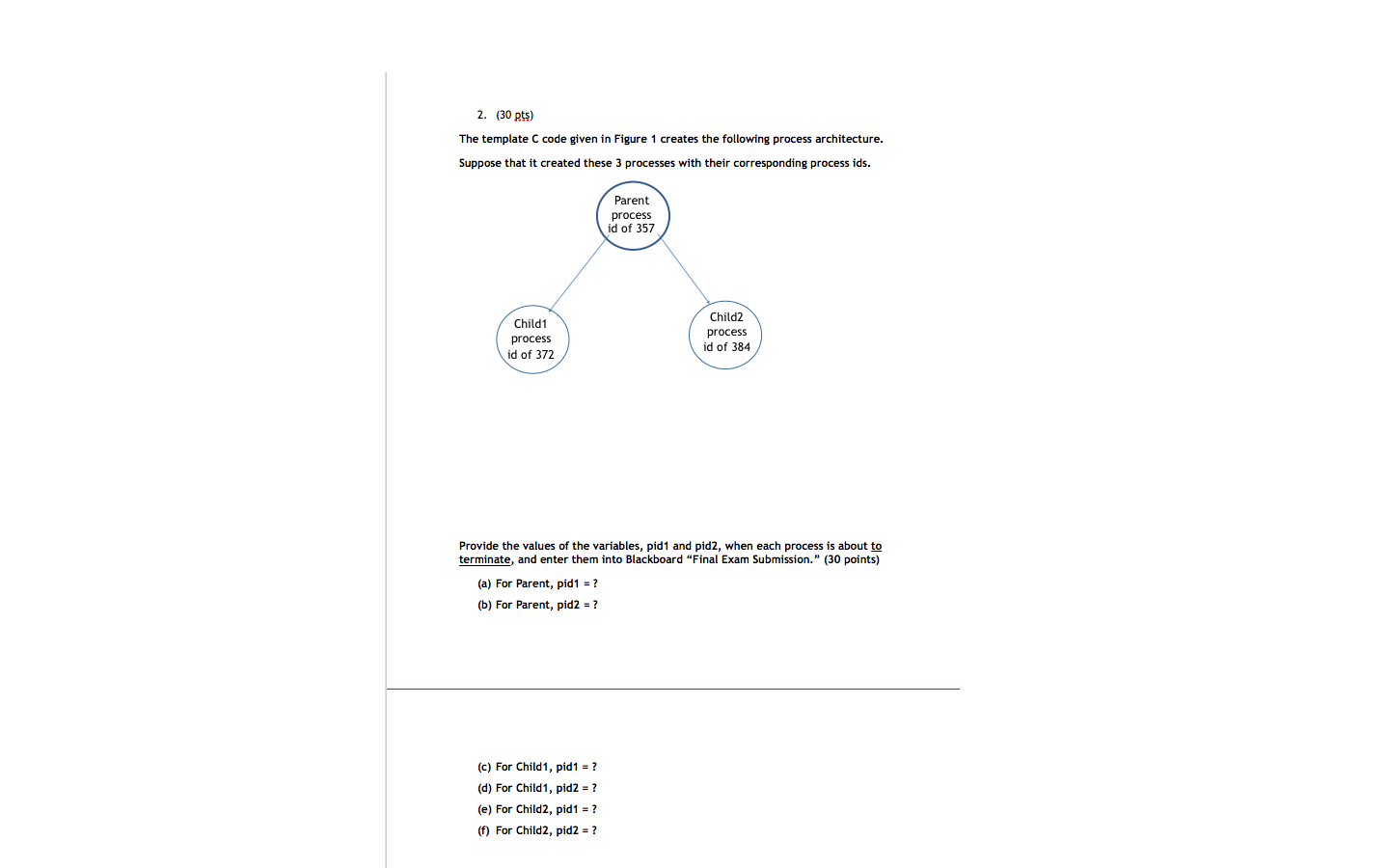Answered step by step
Verified Expert Solution
Question
1 Approved Answer
----------------------------------- Figure 1 ------------------------------------------------ #include #include #include int main() { int fd; pid_t pid1=-1, pid2=-1; /* process-id */ switch(pid1 = fork()) { case -1: /*

----------------------------------- Figure 1 ------------------------------------------------
#include
#include
#include
int main()
{
int fd;
pid_t pid1=-1, pid2=-1; /* process-id */
switch(pid1 = fork()) {
case -1: /* error */
perror("fork failed");
break;
case 0:
break;
default:
switch(pid2 = fork()) {
case -1: /* error */
perror("fork failed");
break;
case 0:
break;
default:
} // end of switch(pid2 = ...
} // end of switch(pid1 = ...
} // end of main()
answer a - f and you will get thumbs up 100%
The template C code given in Figure 1 creates the following process architecture. Suppose that it created these 3 processes with their corresponding process ids. Provide the values of the variables, pid1 and pid2, when each process is about to terminate, and enter them into Blackboard "Final Exam Submission." (30 points) (a) For Parent, pid1 = ? (b) For Parent, pid2 = ? (c) For Child1, pid1 = ? (d) For Child1, pid2 = ? (e) For Child2, pid1 =Step by Step Solution
There are 3 Steps involved in it
Step: 1

Get Instant Access to Expert-Tailored Solutions
See step-by-step solutions with expert insights and AI powered tools for academic success
Step: 2

Step: 3

Ace Your Homework with AI
Get the answers you need in no time with our AI-driven, step-by-step assistance
Get Started


